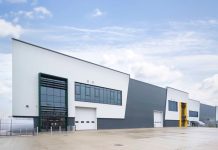Carter Jonas, the national property consultancy, has released its Q3 2019 analysis of London office occupancy costs, rents and market trends for new and refitted Grade A office space over 5,000 sq ft.
Despite the dominance of tower cranes on the London skyline, large-scale pre-lets are reducing office vacancy, constraining choice and increasing upward pressure on rents. BT’s recent pre-letting of the entire 320,000 sq ft at One Braham Street in the east City fringe is an example of this increasing trend.
According to Carter Jonas, rents for new Grade A office space have increased in many of the Central London sub-markets, typically by £2.00 to £3.50 per sq ft per annum since Q3 2018.
Farringdon has witnessed the highest increase in rents – up 10% to, typically, £82.50 per sq ft per annum for new Grade A space since Q3 2018, with Blackfriars and Holborn coming second and third respectively in the rental growth rankings – where rents have increased by over 7.7%. The construction of an Elizabeth Line station at Farringdon has contributed to this significant above inflation increase in rents.
Michael Pain, Head of Tenant Representation Team at Carter Jonas, said:
“The declining availability of new Grade A space in the London office market means that the bargaining power in lease negotiations is beginning to move in favour of landlords, as choice becomes more limited. Well informed, footloose, tenants are therefore starting their property searches much earlier and are signing up to pre-let deals on buildings that are still under construction to secure operationally suitable space that falls within budget.”
Pain added:
“The key driver of demand in the London office market is workforce demographics and the ‘flight to quality’. Employers are increasingly recognising the importance of trading up into new Grade A space – with high wellness and environmental sustainability ratings – in order to underpin recruitment strategies to attract a young, motivated, productive and profitable workforce.”
Forecast Rising Rents
Providing that there is no hard Brexit, Carter Jonas’ research indicates that many of London’s office sub-markets are likely to witness the return of sustained rental growth over the next two years. Significantly, it is the peripheral, emerging, markets that dominate the rental growth forecast table. White City and Mayfair are forecast to experience the highest increases in rents – rising 9.5% and 9.1% respectively with the east City fringe and Battersea taking third and fourth place in the rankings with forecast rent increases of over 8%.
Office Occupancy Costs
Commenting on Carter Jonas’ analysis of office occupancy costs, Pain said:
“Mayfair continues to hold the record for the district with the highest rent, business rates and service charge office occupancy costs – typically £173.20 per sq ft per annum for new Grade A space – up 3.7% since Q3 2018.
“Office occupancy costs in the City of London, by comparison, are £106.65 per sq ft per annum for equivalent quality space, representing a saving of 38.42% in real estate costs. Stratford continues to hold the crown for the lowest occupancy cost location for new Grade A space – at £71.10 per sq ft per annum.”
Daniel Francis, Head of Research at Carter Jonas, commented:
“It comes as no surprise that Farringdon and Holborn have recorded the highest increases in rent, business rates and service charge occupancy costs since Q3 2018 – 7.9% and 5.5% respectively, driven by high rates of rental growth.”
Francis added:
“Businesses will not welcome these latest increases in office occupancy costs, given that real estate is typically the second largest operating cost for most businesses, after salaries. The rise in office costs is being driven by a combination of historically low vacancy, stronger than forecast demand and the construction of new buildings that are setting new rent benchmarks.”






















